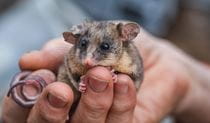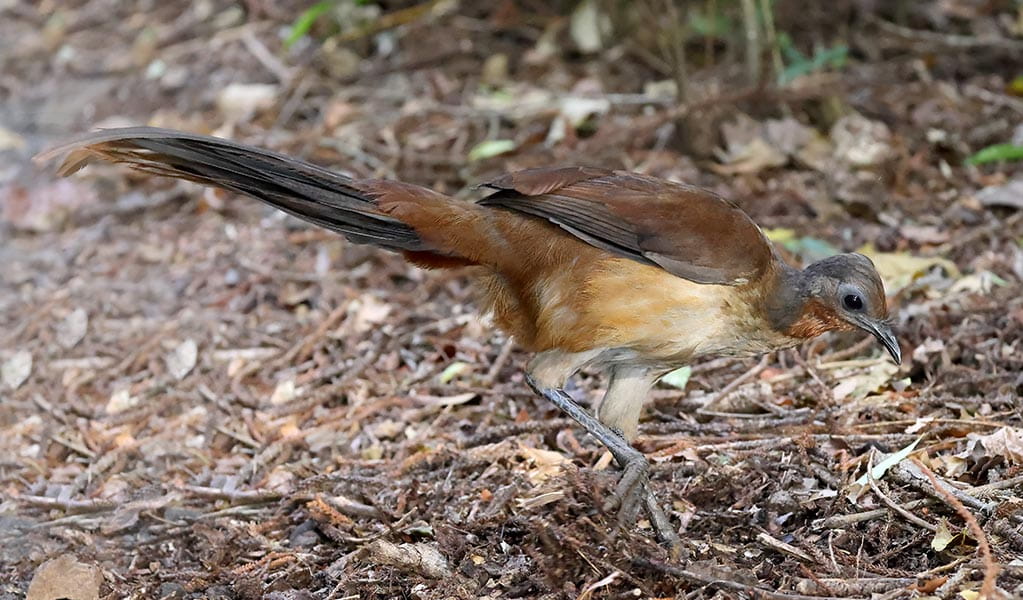Albert's lyrebird
The Albert’s lyrebird is much rarer than the superb lyrebird. Distinguished by its richer brown plumage and less elaborate tail feathers, it’s protected as a threatened species in NSW.
Albert’s lyrebirds are large, shy birds restricted to a narrow range of subtropical rainforest and moist eucalypt forests in far northern NSW and south-eastern Queensland.
They’re so shy that the first published photo of one didn’t appear until 1970, some 120 years after being first described by French ornithologist Charles Bonaparte (Napoleon’s cousin).
Courtship
Males create courtship arenas in a thicket of tangled vines in the dense rainforest. These thickets are often located where the forest canopy has been disturbed. The extra light in these openings helps to spotlight his display.
During courtship displays males lift their tail feathers forward across their head to create a lacy curtain. The performing bird peers through the feathers, keeping a sharp eye out for female interest and predators.
His dance moves include stepping on specially selected thin vines which lay across the arena. Each step causes sections of the thicket shake in a rhythmic pattern. The timing, dance pattern and song varies between Albert's lyrebird meta-populations.
Monitoring footage © Anna Fearnley
Monitoring footage © Anna Fearnley
4 facts about lyrebirds
Listen to an Albert’s lyrebird call
Audio © David Stewart Naturesound
Animal facts
- Common name
- Albert's lyrebird
- Scientific name
- Menura alberti
- Conservation status in NSW
- Vulnerable
Threatened species
Widespread clearing and burning of coastal sub-tropical rainforests during the 19th century significantly reduced Albert’s lyrebird numbers. It’s estimated that fewer than 800 pairs remain in NSW, and they’re listed as a vulnerable species.
Small populations are spread across isolated rainforest islands, some with as few as 10 to 20 individuals.
Dingoes, spotted-tailed quolls, red foxes, feral cats and grey goshawks are thought to prey on Albert’s lyrebirds.Other threats include urbanisation and replacement of wet sclerophyll habitat with plantations, which can also pave the way for invasive weed species, like lantana.
You might also like
-

Superb lyrebird
With a complex mimicking call and an elaborate courtship dance to match, the superb lyrebird is one of the most spectacular Australian animals. A bird...
-

Protecting threatened species in parks
Around 84% of the approximately 900 threatened species in NSW are found in our national parks and reserves. Find out what we're doing to protect threa...





